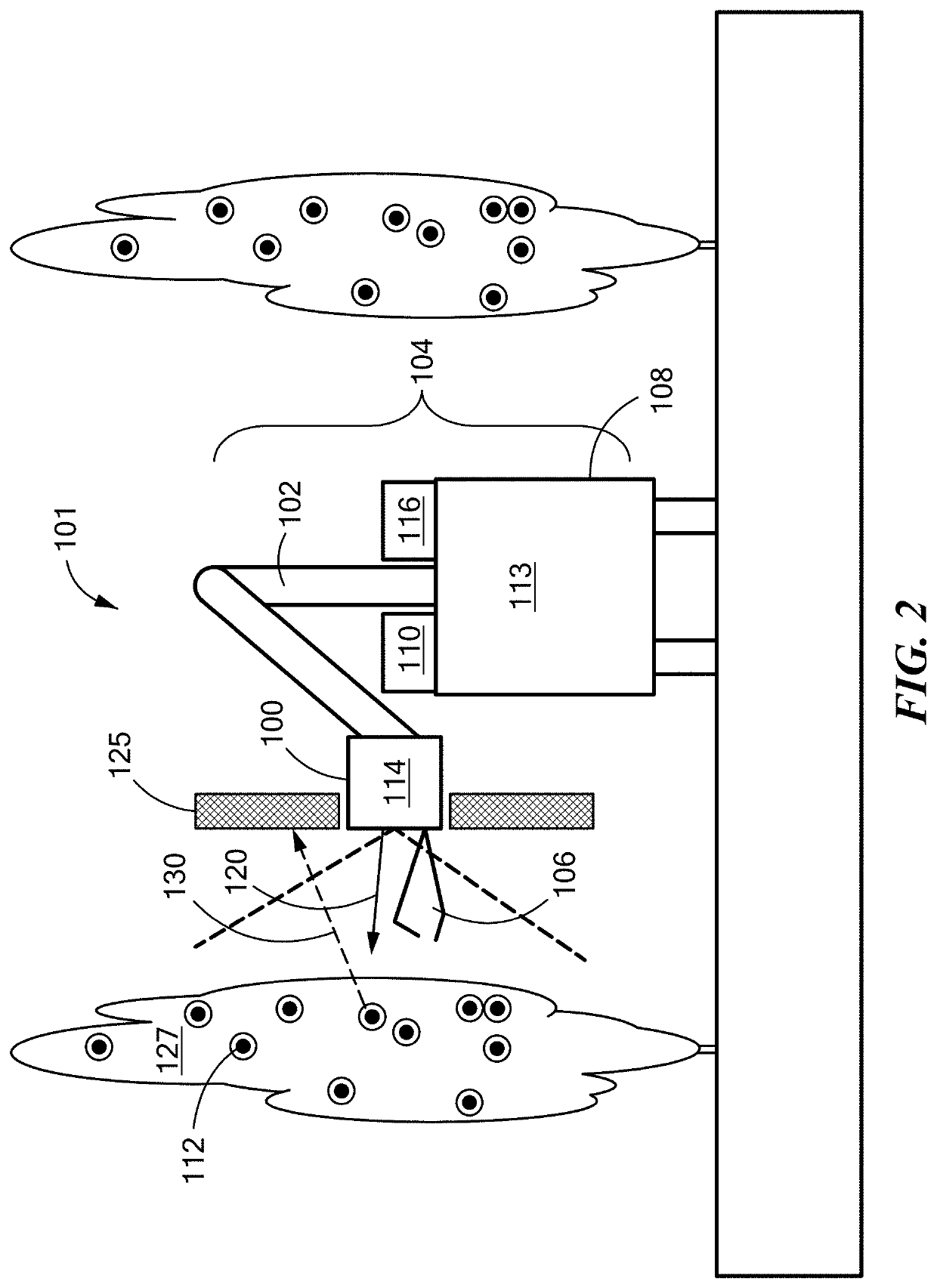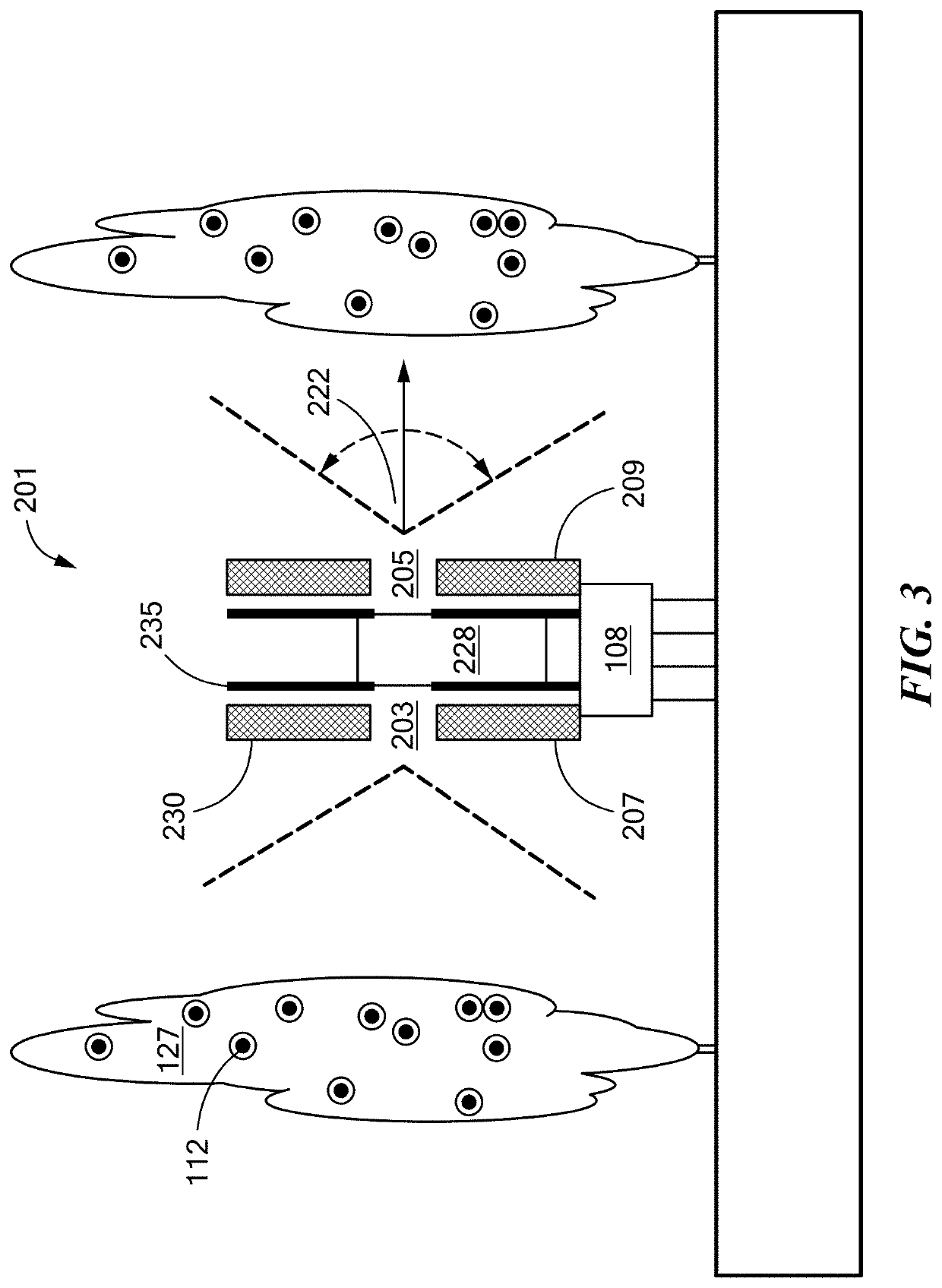Backscatter Imaging for Precision Agriculture
a technology for precision agriculture and backscatter imaging, applied in the direction of program-controlled manipulators, instruments, testing plants/trees, etc., can solve the problems of time-consuming, labor-intensive, inaccurate, and preventing their application to date,
- Summary
- Abstract
- Description
- Claims
- Application Information
AI Technical Summary
Benefits of technology
Problems solved by technology
Method used
Image
Examples
Embodiment Construction
[0011]In accordance with an embodiment of the present invention, a method is provided for remotely characterizing a living plant. The method has steps of[0012]a. generating a first beam of penetrating radiation;[0013]b. scanning the beam across the living plant;[0014]c. detecting Compton scatter from the living plant derived from the first beam of penetrating radiation to generate a first scatter signal; and[0015]d. processing the scatter signal to derive one or more characteristics of the living plant.
[0016]Compton backscatter x-ray characterization, and imaging in particular, are sensitive to materials of low effective atomic number, such as water and organic materials.
[0017]Some embodiments of the present invention may use a beam where the beam is collimated in one dimension. Other embodiments may use a beam wherein the beam is collimated in two dimensions, referred to as a pencil beam. Some embodiments of the invention may derive a characteristic, such as water content, root str...
PUM
 Login to View More
Login to View More Abstract
Description
Claims
Application Information
 Login to View More
Login to View More - R&D
- Intellectual Property
- Life Sciences
- Materials
- Tech Scout
- Unparalleled Data Quality
- Higher Quality Content
- 60% Fewer Hallucinations
Browse by: Latest US Patents, China's latest patents, Technical Efficacy Thesaurus, Application Domain, Technology Topic, Popular Technical Reports.
© 2025 PatSnap. All rights reserved.Legal|Privacy policy|Modern Slavery Act Transparency Statement|Sitemap|About US| Contact US: help@patsnap.com



